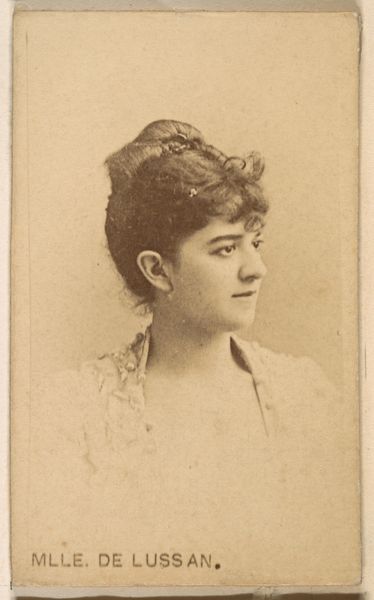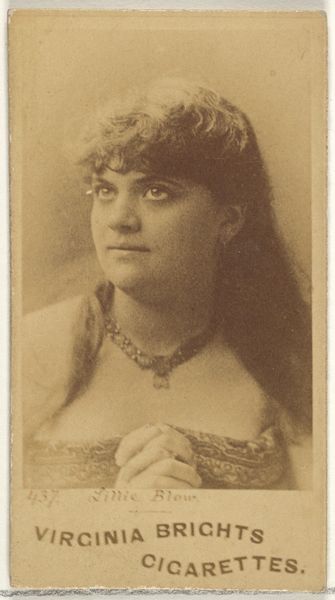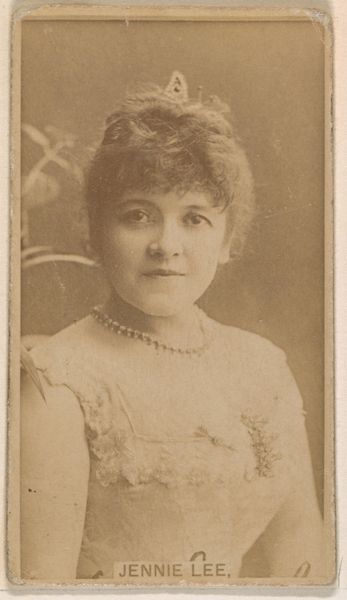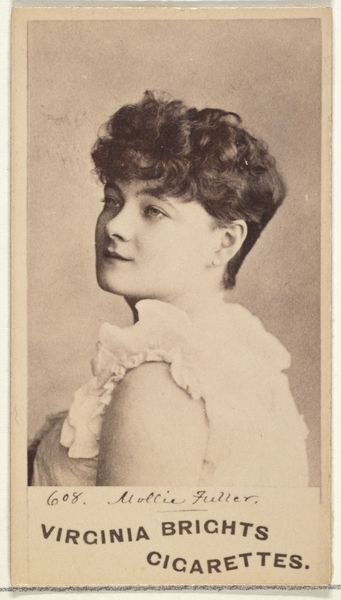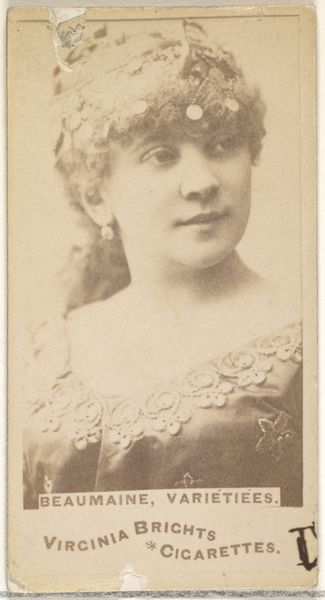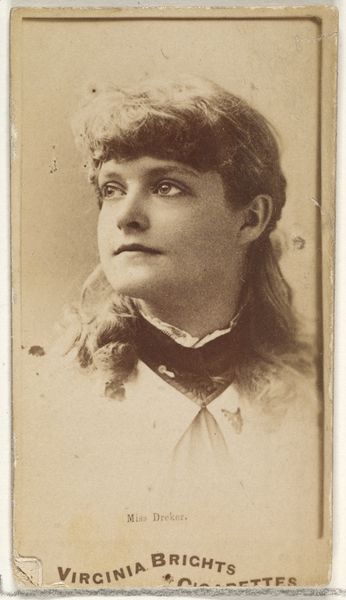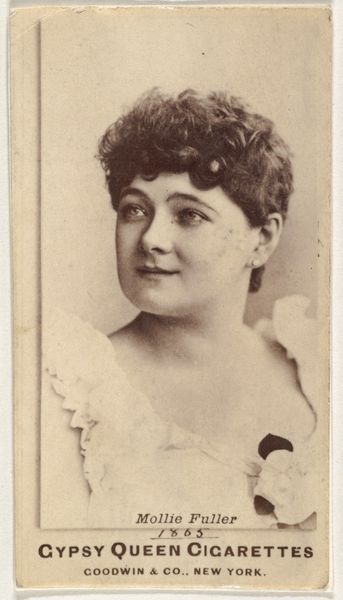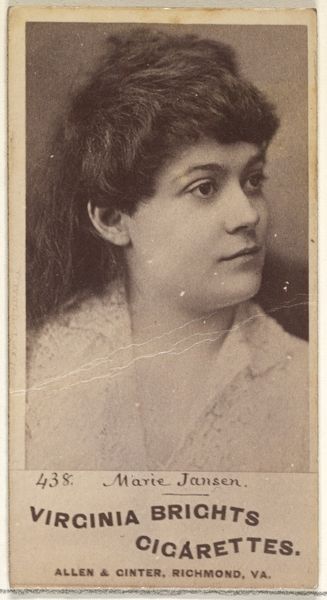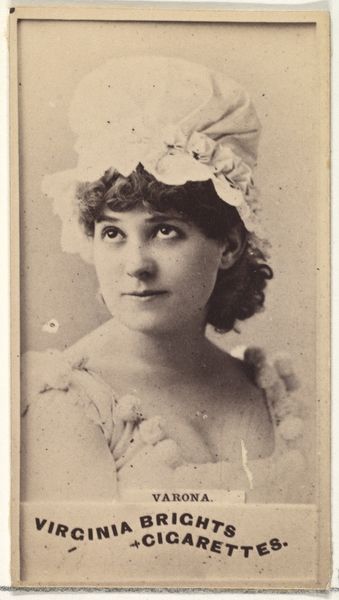
Eva Shaler, Corsair Co., from the Actors and Actresses series (N45, Type 6) for Virginia Brights Cigarettes 1885 - 1891
0:00
0:00
drawing, print, paper, photography
#
portrait
#
drawing
#
still-life-photography
# print
#
paper
#
photography
#
historical photography
Dimensions: Sheet: 2 15/16 x 1 11/16 in. (7.4 x 4.3 cm)
Copyright: Public Domain
Curator: There’s a serene quality to this portrait. It seems to capture a quiet confidence, almost defiant. Editor: This is "Eva Shaler, Corsair Co." part of the "Actors and Actresses" series, dating from 1885 to 1891. Allen & Ginter created this lithograph as a promotional card for Virginia Brights Cigarettes, located at the Metropolitan Museum. These cards were essentially advertisements targeting a very specific audience. Curator: The lithographic process certainly flattens the image, almost distilling the sitter to an archetype. It reminds me of theatrical portraits of the time, which had their own complex power dynamics regarding gender and performance. We must consider the intended audience consuming these images and associating this female persona with tobacco consumption. What cultural expectations and limitations were placed on actresses during this time, and how is it subtly revealed here? Editor: It’s intriguing how the sepia tones add a nostalgic filter. Look closely at the detailing in the lace. The engraver masterfully rendered a three-dimensional textile. This contrast, along with the sharp focus on Shaler's gaze and her gently curved hair, creates a composition where the subject, and her expression, command our focus. Curator: Considering these were intended for a mostly male consumer base, what narratives were these images selling? Was Shaler in control of her representation or was she being packaged as a consumable object along with cigarettes? Editor: What’s also fascinating is that these cards existed within a burgeoning culture of collecting. Imagine a collector carefully archiving these tiny paper portraits; constructing miniature personal pantheons within a larger context that reflected the culture's desires. Curator: And it highlights the blurred lines between celebrity, commodification, and early forms of mass media, placing it at a crucial intersection for gender and media studies. It begs to understand, what happens when a portrait, created for marketing purposes, winds up in a museum as an historical artifact? Editor: Absolutely. This close analysis has further solidified its artistic construction. There’s a careful intention to both create likeness but more importantly, impact.
Comments
No comments
Be the first to comment and join the conversation on the ultimate creative platform.
